“All of this drives my wife insane.” We need to talk about Mike Kiraly’s ridiculous studio…
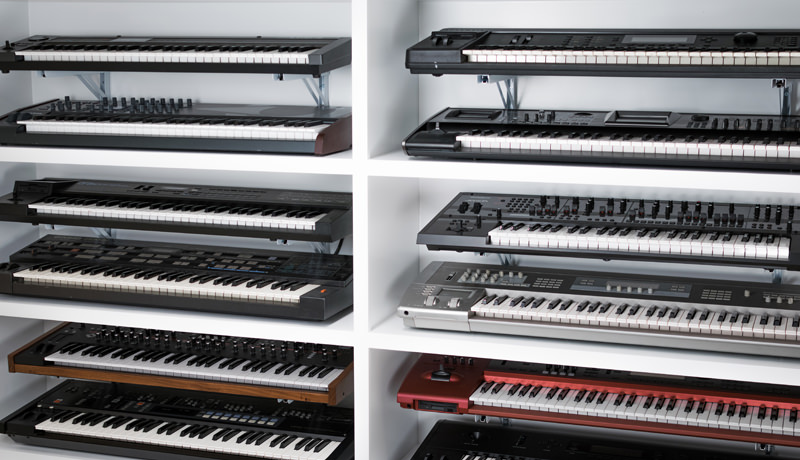
The Closet, Part 1
When I first began setting up the studio I tried my best to have everything wired up and ready to go at all times. It didn’t take long to realise that it just made things feel cramped. So instead I built a dedicated storage room which has become known as The Closet.
This built-in cabinet is home to the keyboard synths I tend to reach for the most. It’s an eclectic mix of analogue and digital, and each one has a specific function or characteristic that keeps it in rotation. I could happily talk for hours about each one of these, but I don’t think Attack readers would appreciate that. So here are some thoughts on a few of my favourites.
I’m consistently in love with the sound of the Dave Smith Instruments Prophet 12. It can be just about anything you need it to be. I have never turned it on and not been instantly inspired. It’s probably been used at some point on every dance music track I’ve created in the past four years.
The Korg Karma is one of the least understood, and therefore most underrated synths of all time. First of all, it’s essentially a modified Triton, which is probably the most powerful S&S [samples and synthesis] synths ever made. But let’s move past that, because it’s the MIDI-generating KARMA functionality that makes this workstation truly unique. I believe people dismissed the KARMA engine as a confusing arpeggiator, or worse, an auto-accompaniment gimmick. But it’s extraordinarily powerful and I have never found anything like it in hardware or software. Admittedly, programming the KARMA feature was painful at best and the companion editor is the least intuitive software I have ever seen. But for those who are patient and determined, the rewards are substantial.
I have been asked many times about the source of the bass line in ‘One Day In Crazies’. The answer is the Access Virus TI. I literally bought this the day it was first available and it’s one of the only synths I have never considered selling. It’s also the synth behind the slippery bass riff heard in ‘Midtown Slides By’.
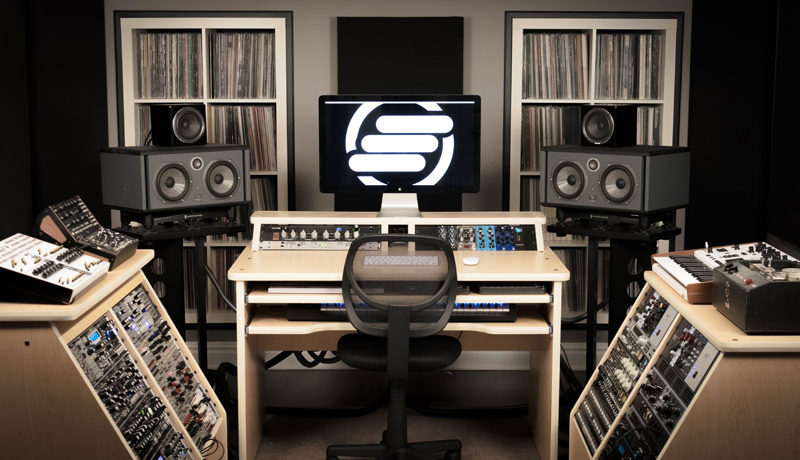


Mike Kiraly – My Studio
Welcome to the place I have happily called my studio for the past five years.
It took me close to six months to design and build it from the ground up. I didn’t have much in the way of practical construction experience, so there was a healthy amount of trial and error involved in getting it right. It’s located in the basement of my home and so one of the primary objectives was to keep the sound bleed as isolated as possible. With that in mind I opted to create a room-within-a-room. It’s essentially a free-standing structure. There is no point of contact between either the walls or ceiling and the rest of the house. It’s not perfectly soundproof, but I can work at a comfortable monitoring level without bothering anyone.
I wanted to be sure I could connect gear quickly and efficiently without constantly tripping over wires on the floor, so I installed custom wall plates at strategically placed locations throughout the room. Each plate has balanced audio, MIDI and USB jacks which are routed to a central patchbay. I can connect anything, from anywhere, at any time. It’s incredibly convenient.
Related



The Closet, Part 1
When I first began setting up the studio I tried my best to have everything wired up and ready to go at all times. It didn’t take long to realise that it just made things feel cramped. So instead I built a dedicated storage room which has become known as The Closet.
This built-in cabinet is home to the keyboard synths I tend to reach for the most. It’s an eclectic mix of analogue and digital, and each one has a specific function or characteristic that keeps it in rotation. I could happily talk for hours about each one of these, but I don’t think Attack readers would appreciate that. So here are some thoughts on a few of my favourites.
I’m consistently in love with the sound of the Dave Smith Instruments Prophet 12. It can be just about anything you need it to be. I have never turned it on and not been instantly inspired. It’s probably been used at some point on every dance music track I’ve created in the past four years.
The Korg Karma is one of the least understood, and therefore most underrated synths of all time. First of all, it’s essentially a modified Triton, which is probably the most powerful S&S [samples and synthesis] synths ever made. But let’s move past that, because it’s the MIDI-generating KARMA functionality that makes this workstation truly unique. I believe people dismissed the KARMA engine as a confusing arpeggiator, or worse, an auto-accompaniment gimmick. But it’s extraordinarily powerful and I have never found anything like it in hardware or software. Admittedly, programming the KARMA feature was painful at best and the companion editor is the least intuitive software I have ever seen. But for those who are patient and determined, the rewards are substantial.
I have been asked many times about the source of the bass line in ‘One Day In Crazies’. The answer is the Access Virus TI. I literally bought this the day it was first available and it’s one of the only synths I have never considered selling. It’s also the synth behind the slippery bass riff heard in ‘Midtown Slides By’.



Mike Kiraly – My Studio
Welcome to the place I have happily called my studio for the past five years.
It took me close to six months to design and build it from the ground up. I didn’t have much in the way of practical construction experience, so there was a healthy amount of trial and error involved in getting it right. It’s located in the basement of my home and so one of the primary objectives was to keep the sound bleed as isolated as possible. With that in mind I opted to create a room-within-a-room. It’s essentially a free-standing structure. There is no point of contact between either the walls or ceiling and the rest of the house. It’s not perfectly soundproof, but I can work at a comfortable monitoring level without bothering anyone.
I wanted to be sure I could connect gear quickly and efficiently without constantly tripping over wires on the floor, so I installed custom wall plates at strategically placed locations throughout the room. Each plate has balanced audio, MIDI and USB jacks which are routed to a central patchbay. I can connect anything, from anywhere, at any time. It’s incredibly convenient.
Related
The Akai AX60 is usually referred to as Akai’s answer to the Roland Juno line, but I would take an AX60 over a Juno any day of the week. It’s got this bite that I feel is lacking in the Junos, and the chorus is gorgeous. As an added bonus, they can usually be found at a fraction of the price these days.
Also pictured: Roland Alpha Juno-2, Roland D20, Casio CZ3000, Kurzweil K2000, Roland V-Synth, Roland JD-Xa, Korg Z1, Korg Wavestation EX.
Related
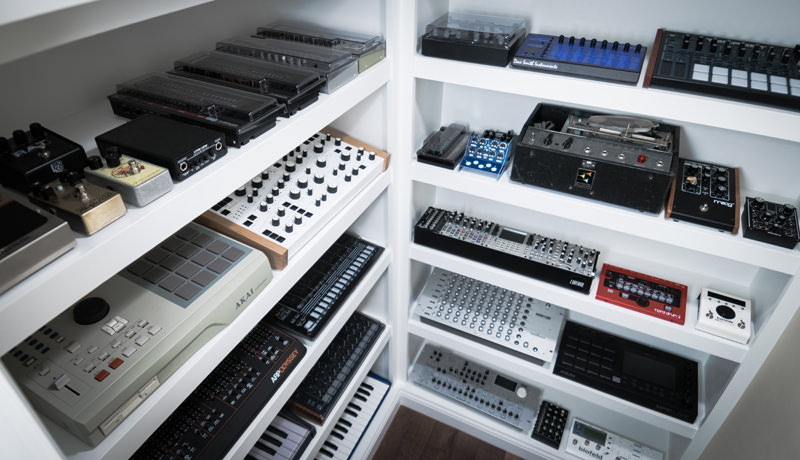


The Closet, Part 2
Where do I begin? This is a closet within The Closet, and is where I store smaller synths, drum machines and effects.
I like to focus on one piece of gear at a time. I’ll pick something that I haven’t used in a while and spend three or four days wringing every last possible sound out of it. But this is only a useful strategy if I understand how to get the best out of something. Luckily I am a huge nerd and I will literally stay up all night reading manuals. I really should get out more.
the Akai MPC 2000XL was my first ever gear purchase. It was 1999 (I think) and I had no idea what I was doing. All I knew was that I wanted to make music. I still use it, although not very often and mostly when I’m feeling nostalgic. Nothing will bring you back to 1992 faster than sampling vinyl with an Akai MPC or S series sampler.
I’m always excited when I see a company trying to do things differently, even if it’s just a new take on a traditional user interface, so I was immediately attracted to the Modor NF-1. In particular, I like that it doesn’t try to be all things to all people – it’s unashamedly digital and I love that.
I have always loved the idea of using guitar pedals on anything other than guitars, but I never had much success getting the sound I was looking for until I discovered the Little Labs Redeye 3D. I was stunned at the difference it made.
Related
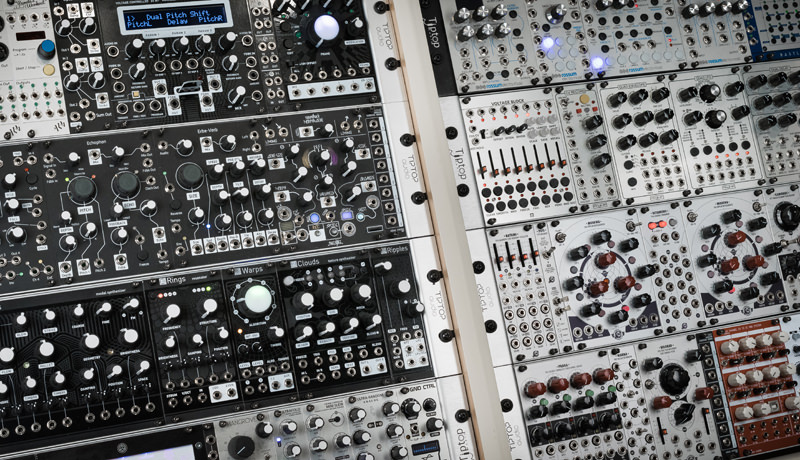


The Modular
About six or seven years ago I began getting really frustrated by the lack of effect plugins with complex modulation capabilities. The only thing at the time that even came close to providing what I was dreaming of was Reaktor, but I didn’t really want to spend hours and hours building user ensembles. Plus, I have always preferred physical interaction with instruments more than using a mouse or drawing automation. So when I discovered the world of Eurorack I was immediately intrigued.
When I saw the Tiptop Audio Z-DSP, I knew it was time to jump on board. Five years later, and my modular has become an essential part of my studio. These days most of my work time is dedicated to sound design, and my modular tends to be the first place I look for any kind of electronic sound.
I won’t lie: it’s rarely the most efficient use of my time. I could probably create 10 times as many individual sounds or samples with a fixed signal path synth in an equivalent amount of time. But that’s not the point, at least not for me. Using a modular is about the journey and the destination in equal measure. Plus, I know that any patch I come up with is 100% me, and only me.
I tend to flip modules pretty quickly, but it’s pretty much guaranteed that any module made by Modcan, XAOC Devices, Rossum Electro-Music or ADDAC System has earned a permanent place in my system.
Related
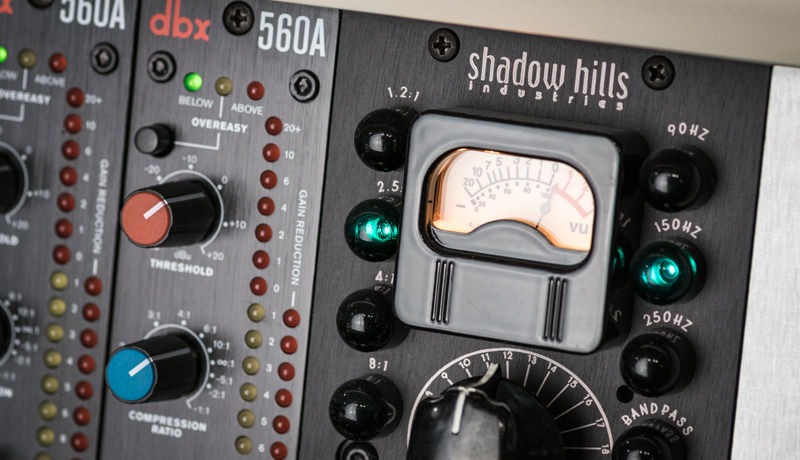


Shadow Hills Dual Vandergraph
I love hardware compressors. More specifically, I love hardware stereo compressors. I have a rack that includes an API 2500, Drawmer 1978 and a pair of linked Empirical Labs Distressors, all of which are used frequently, but the Shadow Hills Dual Vandergraph is something else altogether. It’s pure magic on a mix bus.
Related
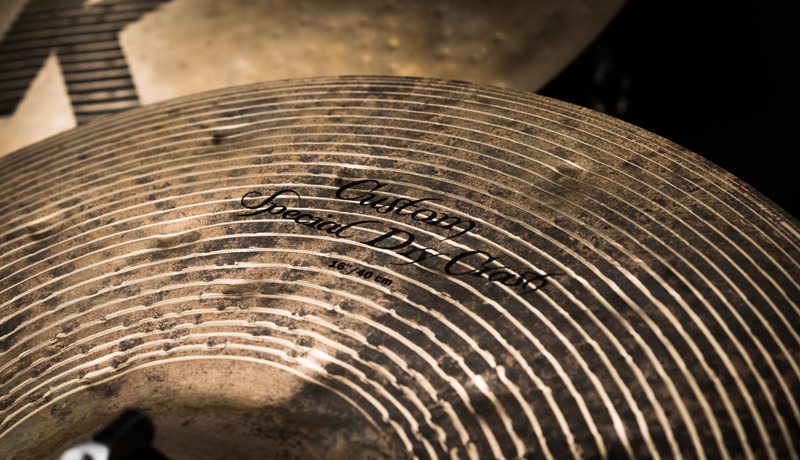


Zildjian K Custom Cymbals
I love cymbals. Especially good cymbals. They can be amazing sources of rich, complex sounds that you just can’t replicate with any kind of synthesis. I’ll record them at high sample rates, usually 96 kHz, and then pitch them down just to see what happens. It always yields an interesting result.
Over the years I have bought and sold dozens of crashes, rides, hi-hats, splashes, etc, etc. But I have never been as consistently impressed as I have been with the Zildjian K Custom line of cymbals. The Custom Hybrid and Special Dry collections are particularly amazing.
Related
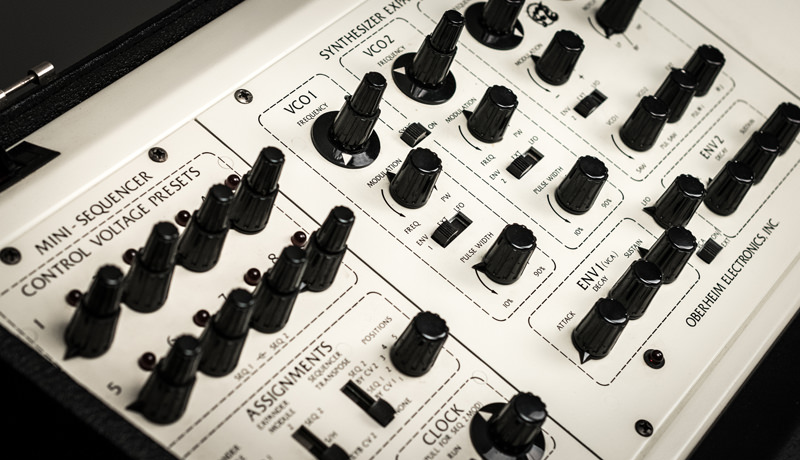


Oberheim TVS-1
I am a relentless garage sale and Craigslist junky. I’ll admit it. I have a problem. I was always looking for that once-in-a-lifetime score, that priceless vintage synth sitting behind a box of old clothes, unused and in perfect condition. And then it actually happened.
This is a pristine Oberheim TVS-1 that had been in storage since it was purchased new in 1975 by a saxophonist who thought he might get around to using it one day. But he didn’t. When he finally decided to sell it he was unaware of its actual value, and listed it for one tenth what he should have. Of course I immediately jumped on it, but I was too late. He kindly informed me that he had been getting calls from all over the country from people offering double and triple his asking price. He was completely overwhelmed and just didn’t know how to handle it all. He was a kind old man, and I didn’t want to see him get ripped off, so I offered to help him price it properly.
A few hours later he called me back and asked me to buy it from him at his original asking price. He told me that the callers were getting increasingly aggressive and he just wanted to see it gone. Apparently I was the only person who was honest with him about its value. Karma is real, folks.
Related
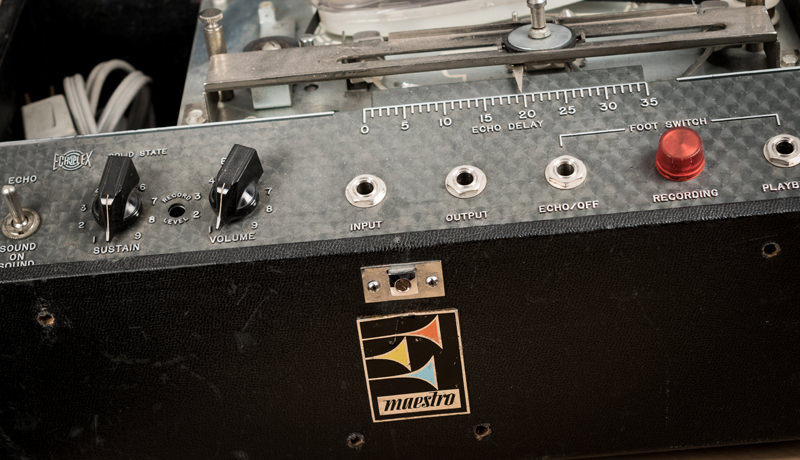


Maestro Echoplex EP-3
Who doesn’t love a tape delay? The only problem I have with this Maestro Echoplex EP-3 is that I can get lost in it for hours. It’s so immediately musical on any kind of sound you throw at it. I might ask to be buried with it when I die.
Related
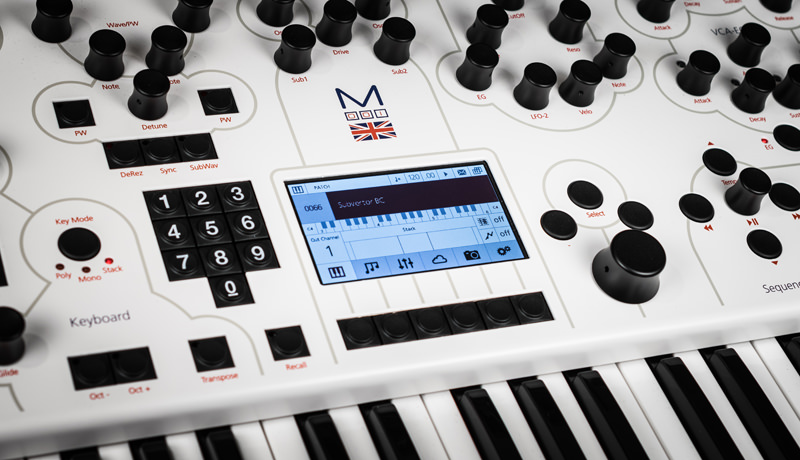


Modal Electronics 001
I’ll admit that I am a sucker for design. I can definitely recall times I’ve convinced myself to buy terrible synths because they looked sexy. Fortunately the Modal Electronics 001 is not one of those synths.
It looks gorgeous. It sounds gorgeous. It has a clever interface. It’s got sequencing capabilities. It’s got CV in and out. It’s built like a tank. And it has leather end cheeks. Really. Leather. Did I mention it sounds gorgeous?
It is currently the only hardware keyboard synth in my studio that is hooked up full time. And I don’t expect it will be leaving any time soon.
Related
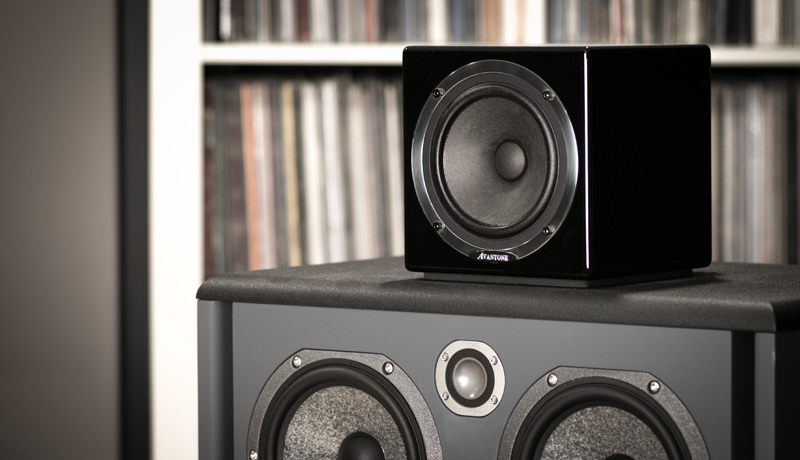


Avantone MixCube
I am a firm believer that everyone should have a pair of grot box monitors. People are most likely to listen to your music on earbuds or laptop speakers. Shouldn’t that fact influence your mix decisions to some degree?
Yes, I have a lovely pair of Focal Twin6 Bes, and they are amazing monitors, but it’s only when a mix sounds good on the Avantone MixCubes that I begin to feel confident it will translate well to multiple kinds of listening environments.
Related
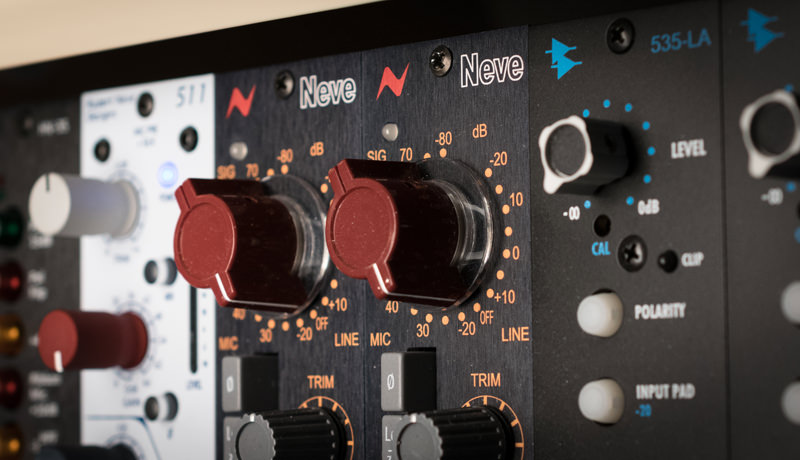


Preamps
I used to rely solely on the preamps found in my audio interfaces, but then the 500 Series format blew up. Suddenly it was possible to buy preamps from companies like Neve or API without needing to take out a second mortgage on your home.
So I bought a few. And sold a few. And bought a few. And sold a few. I began to uncover the sonic impact of pairing certain microphones to certain preamps. It’s all very subjective of course, and proper mic placement and technique is still the most critical part of the recording process.
After a year or so of experimentation with the mics in my arsenal, I concluded that I could handle almost any kind of source with either a Neve 1073LB, RND 511, or a Millenia HV-35. I haven’t been proven wrong yet.
Related
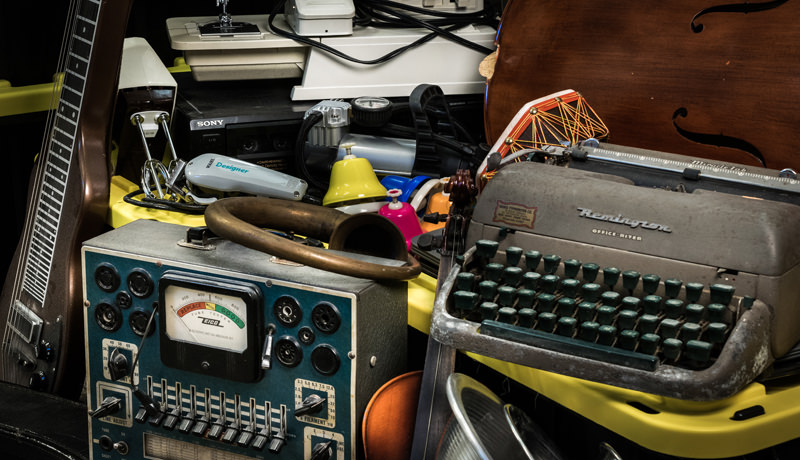


Garage Sale Sound Design
As I mentioned before, I am a garage sale addict. Most Saturday mornings I wake up and drive around town looking for random objects that I think might make interesting sounds.
I tend to focus on tools, appliances, toys, and instruments (especially if they’re broken). I have a rule – never spend over $5. I’ve come home with oil drums, cellos, typewriters, drills, film projectors and car parts.
When it comes time to record items, I’ll generally start by capturing the sounds they were designed to make. Then I’ll start abusing them. I’ll drop things off the roof, smash them with sledgehammers, drill holes and hang them from springs, put them underwater, fill them with marbles, etc, etc. Anything I can think of.
I’ll generally use three to five different kinds of microphones simultaneously, and then mix it down. Of course there’ll always be the standard dynamic and condenser mics in play, but I also use a variety of contact or piezo mics, instrument pickups and more.
I collect everything in giant storage bins when I’m done. All of this drives my wife insane.
Related
Mike Kiraly’s ‘Si Mani Revisited’/’We Get Messed Up’ is out now on Loot Recordings. Find him on Facebook
, Twitter and SoundCloud
.
Related
29th March, 2018
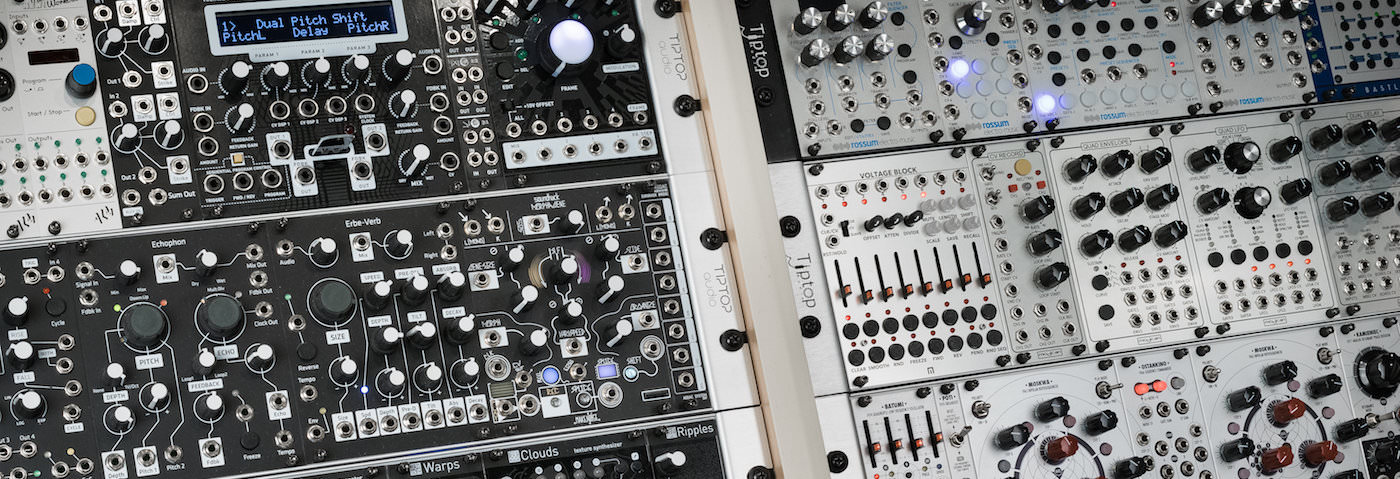
11.40 PM
Wow. This is an incredibly beautiful studio with an equally incredible collection of pieces. The time, care and love that this stuff has been brought together with is very clear. I think this is my favourite My Studio yet. Dedication on display!
06.39 AM
“I could happily talk for hours about each one of these, but I don’t think Attack readers would appreciate that.”
This Attack reader would 😉